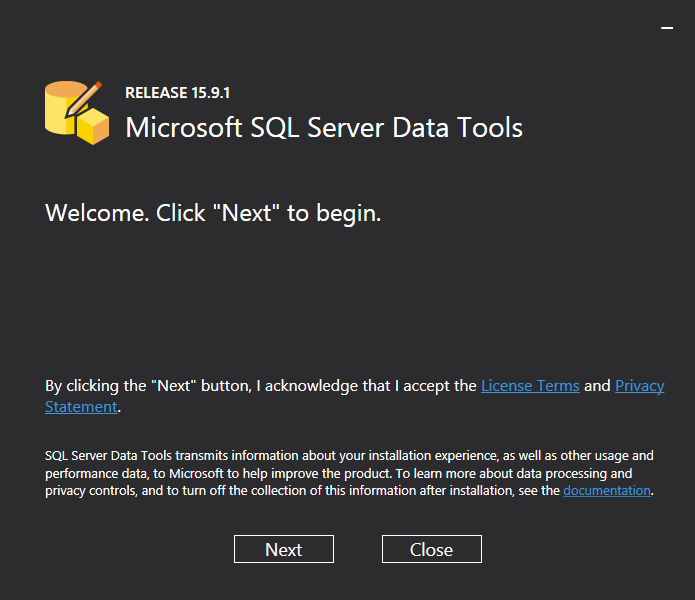

If you don’t have a Visual Studio Subscription, you can create one for free by clicking on “Create a new Microsoft account” on the login page. The following example executes the statements in the batch twice.To download any product from the following list, click the download button and log in with your Visual Studio Subscription account when prompted. USE AdventureWorks2012 ĬAST(GETDATE() AS CHAR(20)) + ' is ' AS CHAR(10)) This is done by not having a GO command until after the last statement that references the variable. Therefore, all local variable declarations must be grouped in a single batch. The remaining statements use a local variable. The first batch contains only a USE AdventureWorks2012 statement to set the database context. The following example creates two batches. SELECT is a utility command that requires no permissions. Yields an error because is not permitted after GO

The SQL Server utilities never send a GO command to the server.ĭo not use a semicolon as a statement terminator after GO. Programmers executing ad hoc statements in the SQL Server utilities, or building scripts of Transact-SQL statements to run through the SQL Server utilities, use GO to signal the end of a batch.Īpplications based on the ODBC or OLE DB APIs receive a syntax error if they try to execute a GO command. The statements in the batch are then compiled into a single execution plan.

SQL Server applications can send multiple Transact-SQL statements to an instance of SQL Server for execution as a batch. PRINT Yields an error: Must be EXEC sp_who if not first statement in Yields an error because not declared in this batch. Try the latest 64-bit Visual Studio 2022 to create your ideal IDE, build smarter apps, integrate with the cloud, optimize for performance, and stay ahead of the curve. GO - is not valid after this GO ends the batch. The scope of local (user-defined) variables is limited to a batch, and cannot be referenced after a GO command. For example, any execution of a stored procedure after the first statement in a batch must include the EXECUTE keyword. The current batch of statements is composed of all statements entered since the last GO, or since the start of the ad hoc session or script if this is the first GO.Ī Transact-SQL statement cannot occupy the same line as a GO command. SQL Server utilities interpret GO as a signal that they should send the current batch of Transact-SQL statements to an instance of SQL Server. GO is not a Transact-SQL statement it is a command recognized by the sqlcmd and osql utilities and SQL Server Management Studio Code editor. The batch preceding GO will execute the specified number of times. See the code listed for the complete Visual C and Visual. To view Transact-SQL syntax for SQL Server 2014 and earlier, see Previous versions documentation. In the private method, xxx SaveItemClick(), encapsulate the existing code in a try.catch block.


 0 kommentar(er)
0 kommentar(er)
